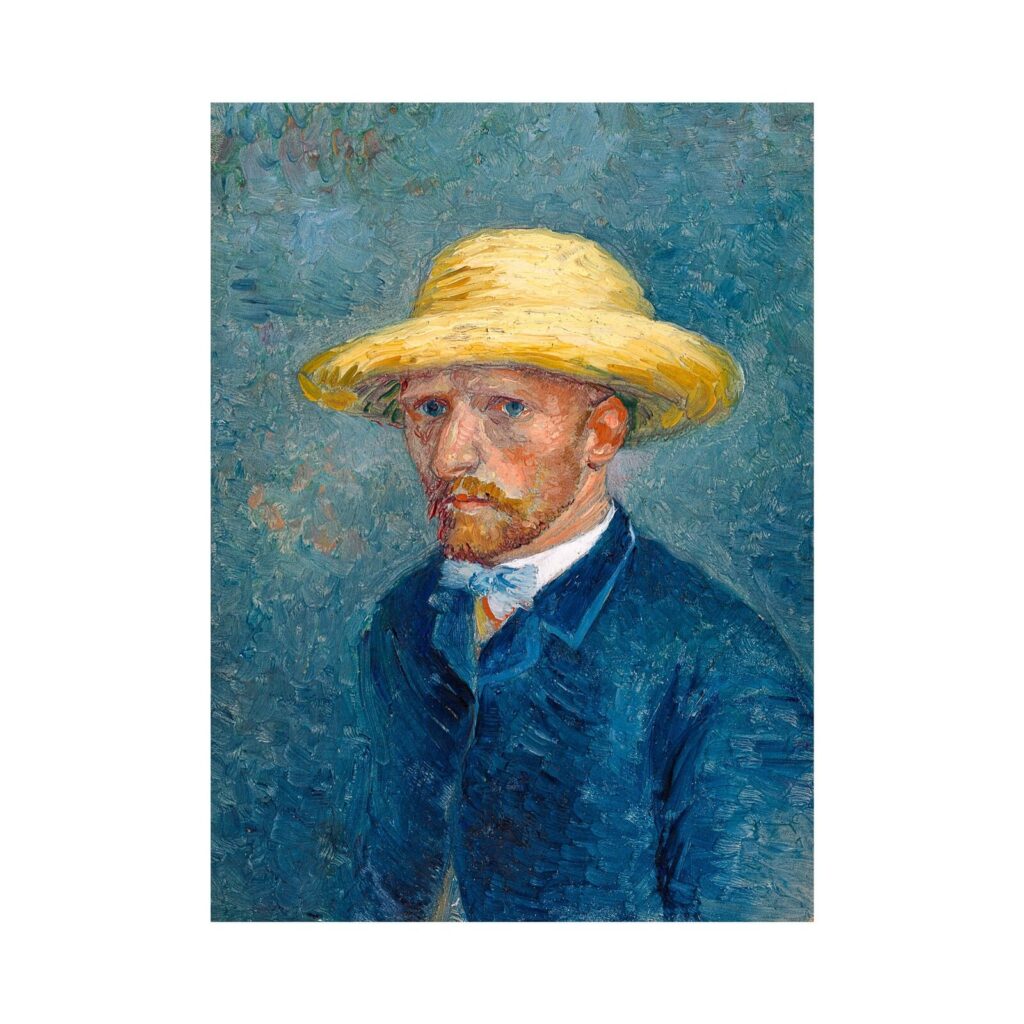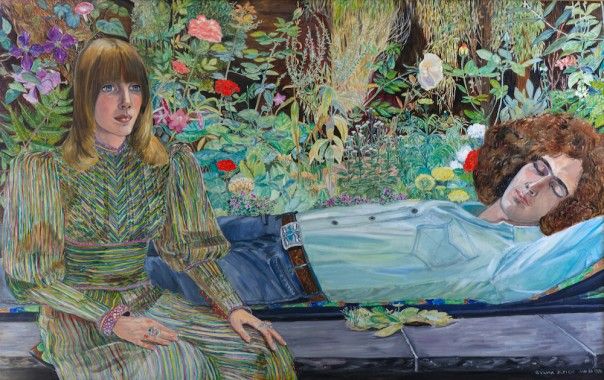One of the greatest myths about art’s muses is that they have all been female, when this is far from the case. Today, the term carries gendered expectations, and museums use the term ‘muse’ for the likes of John Singer Sargent’s female sitters, but not for the male ‘models’ as they are called in the frame of Francis Bacon. But history is, in fact, filled with inspiring men who served as a force of creative inspiration for artists – they were poets, fellow artists, friends, partners, doctors and noblemen. Here are 10 of the world’s most significant male muses who inspired masterpieces, including the Mona Lisa.


David, c. 1501 – 1504, by Michelangelo
1.Tommaso dei Cavalieri
Michelangelo was in his 50s when he met and fell for a young nobleman called Tommaso dei Cavalieri. As Vasari noted, “Infinitely more than any other friend, Michelangelo loved the young Tommaso”, who represented an ideal male beauty to the artist. Serving as his male muse, Tommaso inspired more than 30 poems, countless letters and a series of drawings, which he received as a gift. Could this great male beauty also have inspired the famous statue of biblical hero ‘David’? Some people like to think so…


2. Gian Giacomo Caprotti da Oreno, better known as Salaì
Did you know that the letters in ‘Mona Lisa’ are an anagram of ‘Mon Salaì’? Nicknamed ‘Little Devil’ by Da Vinci, because of his penchant for stealing, he was the artist’s servant, apprentice and muse. We know for certain that he was the model for Leonardo da Vinci’s ‘St. John the Baptist’, ‘Bacchus’ and ‘Angelo Incarnato’. Did this beautiful boy also inspire the most famous portrait in the world?


3. Federico García Lorca
The renowned Spanish poet and playwright served as a muse to the great surrealist, Salvador Dalí. Their friendship and creative collaboration produced works that blurred the lines between poetry and painting, including ‘The Persistence of Memory’ where dreamlike landscapes and distorted figures evoke the essence of Lorca’s poetic imagery.

4. Theo van Gogh
A Dutch art dealer and the younger brother of Vincent van Gogh, it was his support of his older brother’s artistic ambitions that allowed Vincent to devote himself entirely to painting. As an art dealer, Theo van Gogh played a crucial role in introducing contemporary French art to the public and he also posed for various artists, including Meijer de Haan and his brother.

5. Thomas Chatterton
Following his suicide aged 17, tortured 18th century poet Thomas Chatterton became a Romantic hero and muse to other struggling artists. Lifeless, and surrounded by torn sheets of poetry, he appears as a martyr for art in ‘The Death of Chatterton’ (1856) by Pre-Raphaelite painter Henry Wallis.

6. Dr Samuel Jean de Pozzi
This French gynaecologist, surgeon and art collector posed for Sargent’s first large portrait of a male subject; he is depicted not in a medical clothing but rather, more informally at home, dressed in a full-length bright scarlet robe de chambre, tied with a red cord at the waist with provocatively dangling tassel, perhaps marking his reputation as a notorious womaniser. The actress Sarah Bernhardt, on whom he operated, was among those he had affairs with, gaining him the title, Dr Love.

7. Peter Schlesinger
David Hockney (b.1937) collaborated with many naked male muses, adopting the male-on-male gaze to celebrate his sexuality on canvas. Among his most significant subjects was American photographer and artist, Peter Schlesinger (b.1948). It was LA-based Schlesinger who invited Hockney into his world of swimming pools in back gardens, including his own family’s. Hockney’s muse provided him with career-changing subject matter – he subsequently reworked the tradition of bathers in art through a homoerotic lens. It was Peter Getting out of Nick’s Pool which won David Hockney the highly respected John Moores Painting Prize in 1967. This was the same year that homosexuality was partially decriminalised in the UK. Schlesinger acted as a bold icon for gay identity and culture in Hockney’s paintings before pursuing his own career as an artist.

8. Paul Rosano
In 1970s New York, musician, artist and life model Paul Rosano was a significant muse of the feminist painter, Sylvia Sleigh (1916–2010), who became known for gender-swapping art historical masterpieces by Ingres, Titian and Velázquez. She painted male subjects, who were close friends and collaborators in this feminist project, as the subject of the female gaze. As she explained, ‘I had noted from my childhood that there were always pictures of beautiful women but very few pictures of handsome men so I thought that it would be truly fair to paint handsome men for women’. In 1975, Sleigh’s painting Paul Rosano: Double Portrait (1974) was included in an exhibition at the Bronx Museum, which at the time was located in the district courthouse. Justice Owen McGivern launched a complaint: ‘We are all in sympathy with the arts, but explicit male nudity in the corridor of a public courthouse is something else.’ Asked about the reaction to her painting, Miss Sleigh said: ‘I wonder if the judge would object to a female nude? I don’t see why male genitals are more sacred than female.’
9. Lawrence Alloway
Sylvia Sleigh also painted over 50 portraits of her husband, Lawrence Alloway (1926–1990), who is easily identified by his bright blonde hair and blue eyes. Sleigh portrayed him naked on many occasions, lying in bed, reclining on the sofa or positioned in gender-swapped masterpieces such as The Turkish Bath (1973). Moreover, in The Bride (1949), Alloway appears as Sleigh’s cross-dressing, Renaissance-style bride, toying with constructed gender roles. An influential art critic and curator, who worked for the Solomon R. Guggenheim Museum in New York City, Alloway posed for Sleigh in a true act of allyship with her feminist vision – that both male and female muses be seen on equal terms.


10. George Dyer
Male figures also dominate the nightmarish paintings of Francis Bacon (1909–1992), who depicted his romantic partners in raw and uncompromising terms. Among his most influential, and unlikely, muses was the well-built East End criminal, George Dyer (c.1933–1971), whom he met in Soho in 1963. In over forty portraits, many of them triptychs, Dyer’s contorted figure appears against a shadowy black background. However, none are as haunting as Triptych – August 1972 and the wider series of four ‘Black Triptychs’ painted by Bacon in the early 1970s. Bacon created each of these works in memory of Dyer, who had committed suicide on the night before his partner’s first major solo show.
In 1985 Bacon told The Times that his series of four ‘Black Triptychs’ are ‘of somebody – a great friend of mine. When I had a show in Paris in ’72 he committed suicide. He was found in the lavatory like that and he was sick into the basin. And I suppose in so far as my pictures are ever any kind of illustration this comes as close as any to a kind of narrative’.



